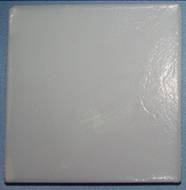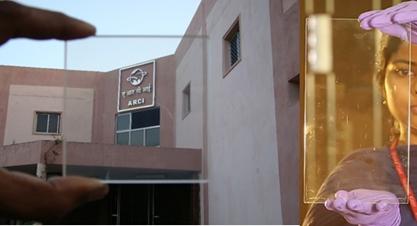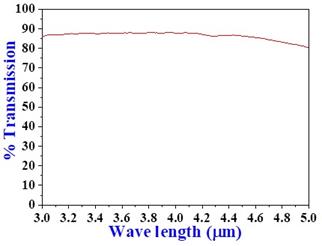Indian researchers have developed transparent ceramics, reaching theoretical transparency through a technique called colloidal processing followed by simultaneous application of temperature and pressure, for the first time in India. The material can be used for thermal imaging applications, especially in harsh service conditions and personal protection systems such as, helmets, face shields, and goggles.
Transparent ceramics is a new class of advanced materials with unique transparency and excellent mechanical properties. These materials can be designed not only for transparent to visible light but also for ultraviolet (UV), Infrared (IR), and Radiofrequency (RF), giving opportunity for diverse applications. Though produced by different countries globally, transparent ceramics are restricted in supply as they can be used for strategic applications. Though several attempts were made in the country, the transparent ceramics produced were either on a laboratory scale or low transparency. Currently developed process is able to produce the sizes usable for several applications and on a pilot scale.
Generally, prepared from the high purity powders through a line of critically engineered processing steps, transparent ceramics needs preparation processes that will help achieve theoretical transparency by eliminating defects. Chemical Vapour Deposition (CVD) involving reactions of the precursors in the vapor phase at elevated temperatures and HotIsostatic Pressing (HIP) involving simultaneous application of temperature and pressure are a few advanced processing techniques generally practiced to address the above challenges. An enhanced diffusion process at high temperature under pressure is suggested as the possible mechanism to eliminate the defects.
Researchers at the ARCI have produced magnesium aluminate spinel ceramics with colloidal processing followed by HIP technique which involves the simultaneous application of temperature and pressure. Spinel is currently emerging as a transparent ceramic based on the outstanding optical properties of transmission – more than 75 % in the visible and more than 80% in the infrared range. It also has higher strength of 200 megapascal and hardness of more than 13 Gigapascal. This research has been published in the journal ‘Materials Chemistry and Physics’ recently.
With potential applications in infantry personal protection systems involving thermal imaging such as helmets, face shields, and goggles, these transparent ceramics developed in India is a step towards Atmanirbhar Bharat.
(a)


(b)
Fig.1. Transparent ceramic samples before (a) and after HIPing at ARCI(b)

Fig.2.The transmission curve of a spinel sample developed at ARCI
Publication details:
Studies on the correlation of surface properties, colloidal shaping, and transparency of magnesium aluminate spinel powder, Papiya Biswas, Swathi Manivannan, Y. Srinivasa Rao, Roy Johnson, Materials Chemistry and Physics 252 (2020) 123372
For more details:Dr.Y. Srinivasa Rao [ysr(at)arci(dot)res(dot)in] and Dr. Roy Johnson [royjohnson(at)arci(dot)res(dot)in] can be contacted.
Source:PIB
visit at: www.shree1news.com







 Finance
Finance






